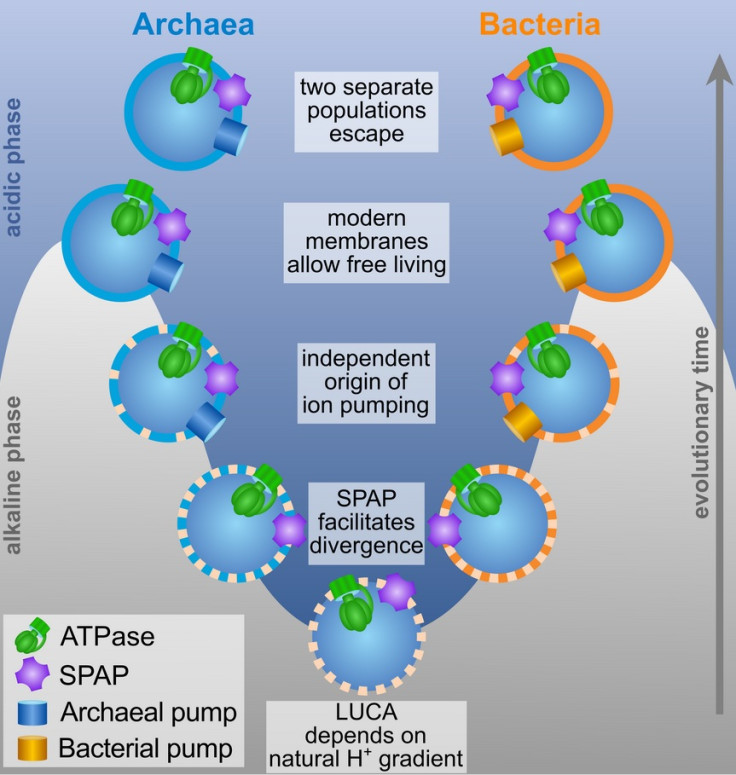Four Billion Year-Old Mystery of Last Universal Common Ancestor Solved

A four billion-year-old mystery surrounding the one common ancestor of all life on Earth has been solved by scientists.
All life evolved from a single celled organism known as life's Last Universal Common Ancestor (LUCA). However, few details are known about what it looked like, how it lived and how it evolved.
Now scientists at University College London (UCL) have discovered that LUCA had a "leaky membrane" which allow it to absorb energy from light, while still holding the other components necessary for life inside it.
Researchers discovered this by modelling how the LUCA's membrane changed to enable its decedents to move to more challenging environments, and eventually evolve into two distinct types of single-celled organisms: bacteria and archaea.
Data suggests LUCA lived in ancient seawater where liquid dense with protons (sub-atomic particles positively charged with electricity) mixed with warm alkaline fluid from vents which had fewer protons.
The difference in concentrations allowed protons to flow into the cell, which led to the production of a molecule called ATP. This transfers energy through a cell, powering its growth.

However, experts say this could only have happened if the membrane was 'leaky' – in that it allowed protons to leave the cell spontaneously, so more could enter to boost growth.
The study's leader Nick Lane said: "In these deep sea vents, there is a continuous flow of alkaline fluids which mix with the ocean waters. When they mix, the fluids neutralise each other, and that stops any build-up of charge which would otherwise prevent protons flowing into the cell.
"If the first cells had leaky membranes, then protons could enter and then be neutralised, or leave again, almost as if there was no barrier at all. What we've shown is that the rate at which protons enter and leave is high enough to power the growth of cells via proteins embedded in the membrane.
"So LUCA could have been powered by natural proton gradients in vents, but only if it had a really leaky membrane, completely unlike today's cells."
Victor Sojo, the first author of the study, said: "Exploiting gradients is universal across all life, but understanding how LUCA used one to drive growth gave us a bit of a chicken-and-egg problem: LUCA wouldn't make a gradient if it didn't know how to exploit it, but how could it learn how to exploit a gradient if it didn't make one in the first place? We propose that natural proton gradients provide a solution because LUCA didn't have to make the gradient; it was already there for free."
The study was published in the journal PLoS Biology.
© Copyright IBTimes 2025. All rights reserved.






















